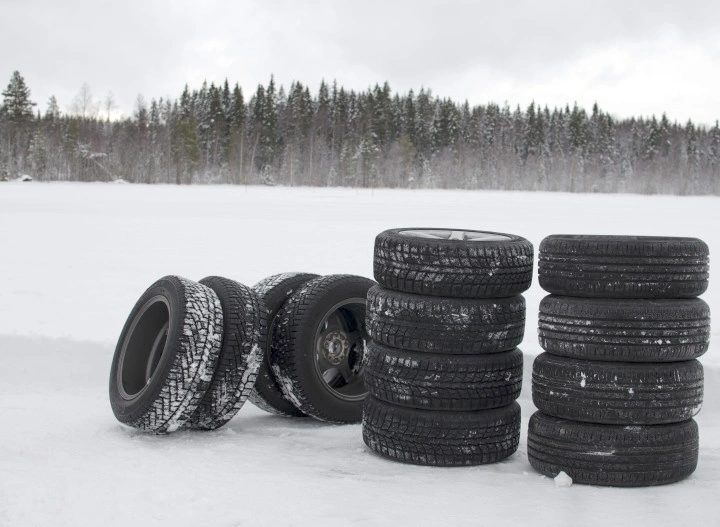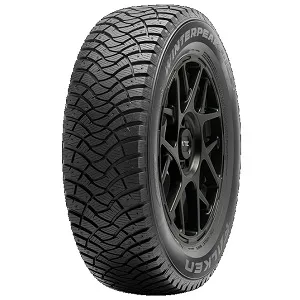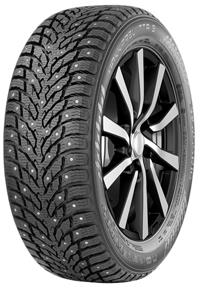Your Shopping Cart
Your cart is empty.
Subtotal ( items)
Instant Rebate Applied:
Promo Code Applied: ID.me Discount Applied:
Have a Promo Code?
Size:
Item
Item
Selected for:
/ each
Add-Ons
Wireless air pump capable of pumping up to 150 psi with 2000 MAH power bank.



Fully protect your clothes and vehicle interior during transportation of your tires. For Tires up to 31" tall and wheels up to 22".
Per sensor
Add TPMS Sensors
/per sensor
Please confirm the make, year, model and trim of the vehicle you want to purchase for:
How many sensors do you need?
The vehicle you have selected is not compatible with aftermarket TPMS Sensors.
Enter a different vehicle to add TPMS sensors

 Front Tire Size:
Front Tire Size:
 Rear Tire Size:
Rear Tire Size:
 Your Vehicle:
Your Vehicle:
Pros & Cons of Staggered Fitment

Attractive Design

Improved Handling

Improved Cornering
Bumpier Ride
Poor Traction in Snow
How do I find my tire size?



Need help?
 Your Vehicle:
Your Vehicle:
Pros & Cons of Staggered Fitment

Attractive Design

Improved Handling

Improved Cornering
Bumpier Ride
Poor Traction in Snow
How do I find my tire size?



Need help?
Pros & Cons of Staggered Fitment

Attractive Design

Improved Handling

Improved Cornering
Bumpier Ride
Poor Traction in Snow
Need help?
Need help?
How do I know if I have an LT tire?

 Your Vehicle:
Your Vehicle:
Sorry, we could not find any available
wheels for your sizing selections.
Need help?
How Do Snow Tires Work? Winter Tire Guide
By Tire Agent Staff
January 16, 2024
TL;DR Here's the gist of this post on snow tires
- How do snow tires work? Special rubber compounds and tread patterns provide better handling and traction in snow.
- How well do snow tires work? Better than all-season and other tread types in the snow.
- When should you put on snow tires? Temperatures below 45F, first snow, or when your local DOT says to.
- When do snow tires have to be off? Your state or local DOT will advise. Typically when regular daily temperatures average 45F or higher.
- How long do snow tires last? Tread depth should be 6/23" or more and tire age no older than 6 years.
Ah, Old Man Winter! As a child, he was a welcomed guest, bringing loads of snow to sled on. As an adult, not so much. Not only does the cold nip at your nose, but the icy, snowy roads are dangerous — especially if your vehicle isn't adequately prepared.
Snow tires, specifically designed for cold, snowy and icy environments, help you confidently navigate snow-covered roads. Here's a quick post on what makes snow tires different.
We go beyond the basics in this post, delving into the intricacies of snow tires and exploring how they work. From the specialized tread patterns to the unique rubber compounds, we explain how winter tires work, when you should put them on and take them off, and how studded snow tires work.
What Are Snow Tires Made Of?
Tire manufacturers engineer snow tires, also known as winter tires, using specific materials to enhance their performance in cold and snowy conditions. Key components of snow tires include specialized rubber compounds, tread patterns and other structural features.
The rubber compounds in snow tires are designed to remain flexible at lower temperatures, providing optimal traction on icy and snowy surfaces. These compounds often include silica, which enhances the tire's elasticity and grip. Flexibility better maintains grip and prevents the tire from becoming rigid in cold weather.
Structurally, snow tires withstand harsh winter conditions, thanks to reinforced sidewalls and treads that are designed to push snow and slush away from the vehicle.
How Do Snow Tires Work?
Winter tires grip ice by displacing water so the rubber can stick directly to the ice, utilizing rubber compounds that stay flexible and adhesive even when the mercury dips well below freezing. They feature deeper tread depths with increased slots and sipes, allowing the tire to dig deep into snow, grip harder on ice, and ultimately provide more effective propulsion and improved contact with the ground.
The key aspects contributing to snow tires' effectiveness include:
- Tread patterns: The tread pattern of snow tires is carefully crafted to tackle the challenges of winter driving. Deep grooves and channels, often with intricate siping (small slits in the tread), help to bite into snow and evacuate slush, providing better traction. The design creates additional edges that grip the road surface, which gives you better stability and more control.
- Rubber compounds: The rubber compounds used in snow tires are formulated to remain flexible in low temperatures for maintaining grip on cold surfaces and preventing the tire from stiffening.
- Sipes and edges: Sipes, the small slits in the tread, contribute to the creation of additional biting edges. These sipes enhance traction on snow and ice, providing a level of control that standard tires may lack. The increased number of edges helps the tire adapt to various winter driving conditions.
- Studs and reinforcements: Some snow tires feature metal studs or reinforcements within the tread. Studs can provide additional grip on icy roads, while reinforced structures in the tire contribute to durability and stability. These elements work together to ensure the tire remains reliable and effective in challenging winter weather.
Snow Tire Patterns Vs All-Season & Other Treads 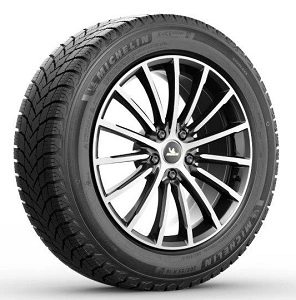
Snow tire patterns differ significantly from all-season and other types of tire treads. The key distinctions lie in tread design, depth and the inclusion of features tailored to enhance traction on snow and ice.
- Deeper tread grooves: Snow tires typically feature deeper and wider grooves in their tread patterns compared to all-season tires. These deep grooves help evacuate snow, slush and water from the tire's contact patch, preventing hydroplaning and improving traction on snow-covered roads.
- Siping: Snow tires often incorporate intricate siping — small slits in the tread blocks. All-season tires may have siping, but snow tire sipes are more aggressive and extensive.
- Blocky tread patterns: The tread blocks on snow tires are often blockier and more pronounced. This design provides stability and better contact with the road, especially in snowy conditions. All-season tires may have a more continuous and less aggressive tread pattern, suitable for various weather conditions but not optimized for snow and ice.
- Studs or metal reinforcements: Some snow tires are designed to accommodate metal studs or include metal reinforcements within the tread. Studded snow tires can provide additional traction on icy surfaces, making them particularly effective in extreme winter conditions. This feature is not present in all-season tires.
When Should You Switch to Winter Tires?
The timing for switching to winter tires and back to summer or all-season tires depends on your region's climate and the specific driving conditions you expect to encounter.
When to install winter tires
- Temperature drop: Consider switching to winter tires when the temperature consistently drops to around 45 degrees Fahrenheit or lower. All-season and summer tires may lose flexibility and traction at these temperatures, while winter tires remain effective in colder conditions.
- Anticipating snowfall: If you live in an area prone to early snowfall, tire experts recommend installing winter tires before the first snowstorm.
- Regional climate: In regions with prolonged and severe winter conditions, think the upper Midwest, we recommend switching to winter tires well before winter. This ensures you are prepared for challenging road conditions and can confidently drive in snow and ice.
- Studded tires: Check with your state or local laws, which specify when and where vehicles are permitted to use studded snow tires and chains.
When do snow tires have to be off?
- Warmer temperatures: Once winter subsides and temperatures consistently rise above 45 degrees Fahrenheit, it's time to consider switching back to summer or all-season tires. Winter tires are optimized for cold conditions and may wear more quickly in warmer weather.
- End of snowfall risks: If you live in an area where the risk of snowfall diminishes in the spring, you can transition back to summer or all-season tires.
- Check local regulations: Some regions may have specific regulations regarding tire usage during certain months, particularly for studded tires. Your department of transportation will have that information.
Ultimately, switching tires depends on your local climate and driving conditions. Regularly monitoring temperature changes and staying informed about weather forecasts can help you make the switch at the right time, ensuring optimal performance and safety throughout the year.
When Should You Replace Winter Tires? 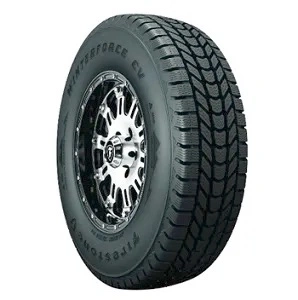
Several factors influence winter tires' lifespan, and monitoring these indicators is essential.
- Tread depth: As tires wear, the tread depth decreases, impacting traction on snow and ice. In many regions, it is recommended to replace winter tires when the tread depth reaches 6/32 inches (4.8 mm) or even earlier for improved safety. (This differs from the 2/23 inch for all-season tires.)
- Tread wear indicators: Many modern tires have built-in tread wear indicators, which are raised sections within the grooves. When the tread wears down to the level of these indicators, it's a clear sign that the tires have reached the end of their usable life and replacement is necessary.
- Age of the tires: Even if the tread appears in good condition, it's advisable to replace all tires over six years old. Tires degrade over time, and older tires may not provide the same level of performance and safety, especially in challenging winter conditions. Find out when and where your tires were made.
- Cracks or damage: Inspect the tires periodically for visible signs of damage, such as cuts, bulges or cracks, especially if you notice strange noises or your car pulls to one side. If you notice any of these issues, replace the tires immediately.
- Usage patterns: Consider how frequently and under what conditions the winter tires are used. Suppose you regularly drive in severe winter conditions or on rough terrain. In that case, the tires may wear more quickly, and replacement might be necessary sooner than for tires used in milder conditions.
What's the best way to store snow tires in the off-season?
One more thing. Proper storage during the off-season is essential for extending the life of winter tires. If tires are stored improperly, exposed to direct sunlight, or left in extreme temperatures, they may degrade more quickly. Store tires in a cool, dry place.
Regularly inspecting your winter tires for these factors and promptly addressing any issues will help determine when to replace them. Prioritize safety by ensuring your winter tires are in good condition and capable of providing reliable traction in snowy and icy conditions. For more tips, here's our in-depth guide on when to replace tires.
How Do Studded Snow Tires Work?
Studded tires and studless tires differ in their approach to winter traction. Studded tires have metal studs embedded in the tread for enhanced grip on icy surfaces. They excel in extreme icy conditions, but may be restricted in some areas due to road damage concerns.
On the other hand, studless tires achieve winter traction through advanced tread designs, specialized rubber compounds and siping. They offer effective performance on snow and ice without metal studs, providing a balance of winter capability and versatility. The choice between studded and studless tires depends on local regulations, driving conditions and personal preferences. Learn more here with our studded tires guide.
Next Post:
Guide to 'Cheap' TiresHow to Qualify for the $50 Offer
- Add items to your cart and begin checkout.
- Select PayPair and apply for financing.
- If you’re approved by a participating lender, you’ll see a $50 promotional rebate applied to your order total.
-
To receive the $50, you must:
- Complete your purchase with a qualifying lender,
- Agree to the payment terms,
- And make the required number of consecutive on-time payments, as specified by the lender.
Note: Offer available only through select lenders. Additional eligibility requirements and conditions apply. Rebate may be issued after verification of qualifying payment activity. Terms subject to change.
How to Purchase Tires and Wheels
With a Payment Plan
Tire Agent's payment plans make it easy to get the best partial or full set of tires and wheels for your vehicle.
It's fast, secure and won't affect your credit score
Match with multiple lenders
Why Choose PayPair?
PayPair’s Partners and Plans

No Money Down

No Money Down

No Credit Needed*

No Money Down

$1 to Start!*

No Money Down

No Credit Needed*

$1 to Start!*

No Money Down
Other Payment Plans

$0 to Little Down

Pay with your bank account

Simplified checkout experience

Faster and easier than using cards or cash

Simplified checkout experience

Faster and easier than using cards or cash
*SNAP: The advertised service is a lease-to-own agreement provided by Snap RTO LLC. Lease-to-own financing is not available to residents of Minnesota, New Jersey and Wisconsin. NO CREDIT NEEDED: Not all applicants are approved. While no credit history is required, Snap obtains information from consumer reporting agencies in connection with applications, and your score with those agencies may be affected. PAYMENT PLAN: The standard plan consists of renewable lease terms. To exercise an early ownership, consumers must make regular payments on time and schedule additional payments via the customer portal or by contacting Customer Care at 1-877-557-3769. KATAPULT: The Promotional Initial Payment (plus any applicable taxes and fees) is due at lease signing. Your lease-purchase payment amount will be determined after you select your product(s). You will not acquire ownership of the product(s) if the total amount necessary to acquire ownership is not paid. The Promotional Initial Payment does not reduce the cost of the lease-purchase agreement. The Promotional Initial Payment is only available when shopping at Tire Agent through the Katapult mobile app and at Tire Agent’s website. Product pricing subject to change and availability. Disclosure: 90-day early purchase option (EPO) terms and conditions apply: 90-Day (3 months in CA) You can buy out your lease-to-own agreement within the first 90-days. This amount includes the cash price, plus the lease-to-own cost for the first 90-days. Taking advantage of the 90-day purchase option will save you the most money! PROGRESSIVE: Ownership by rental/lease agreement with Progressive Leasing costs more than the retailer’s cash price. Select items only. Cancel or purchase early at any time. Not available in MN, NJ, VT, WI, WY. Progressive Leasing obtains information from credit bureaus. Not all applicants are approved. Standard agreement offers 12 months to ownership. 90-day purchase options cost more than the retailer’s cash price (except 3-month option in CA). To purchase early or to cancel lease, you must call 877-898-1970. Retailer cannot activate early purchase options.

